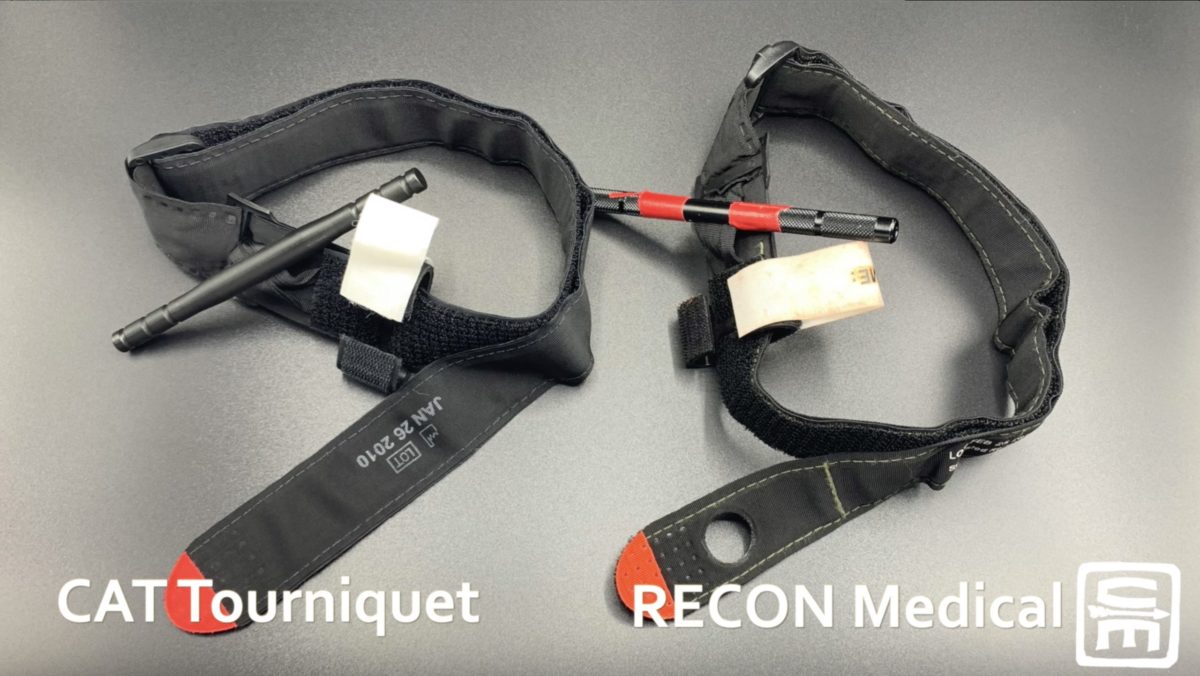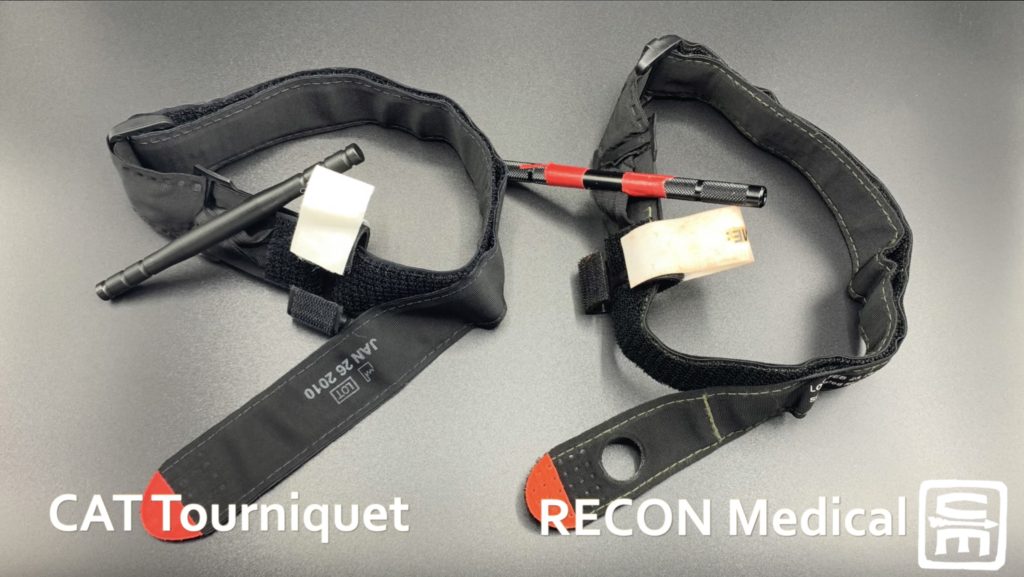
Recon Medical “Tourniquets” – Speculation Over Science
- Posted by Mike Shertz MD/18D
- Categories (M) Massive Hemorrhage, Equipment
🕖 Reading Time, 4 minutes
In concept, any non-elastic material wrapped circumferentially around a limb and tightened should be able to generate enough pressure to occlude arterial flow and act as a tourniquet. Although there are numerous tourniquets on the market that aren’t counterfeit (a copy claiming to be an actual named device, like some of the airsoft ‘toy’ tourniquets many have seen) most commercially available tourniquets remain unproven.
Without human volunteer testing, verifying occlusion of arterial flow, how do we know the device actually does what it claims? Multiple factors go into successful tourniquet application: usability by the applier, perceived pain of application to the casualty that might get the applier to place the device looser than necessary, the ability of the device to generate adequate pressure on a given limb, the ability of the device to hold pressure, etc.
It is now commonplace to use a computerized model to test tourniquets. Although testing tourniquets on a computerized model provides repeatability in an experiment (if the device is designed with that in mind) it doesn’t tell us anything about the tourniquet’s actual success rate or efficacy on a human.
Many manufacturers simply copy existing successful tourniquet designs and change a detail or two to avoid patent infringement. However, unless the new tourniquet is also human tested, how do we know the changes aren’t detrimental to the device’s performance?
One such tourniquet is the Recon Medial tourniquet. In form it appears very similar to a CAT tourniquet but has a thumbhole on the circumferential band and a metal windlass/rod. This device is becoming fairly common. Recently we have seen them placed in commercial active shooter medical bags and in a local high school. Unfortunately, there is no evidence they work. Admittedly, that also means there is no evidence that they don’t. The strongest evidence the manufacturer can provide upon repeated inquiries is that four members of the National Tactical Officers Association (NTOA) have played with the device (but not performed any scientific testing or doppler applications) and liked it. Although NTOA is a great organization for the dissemination of information among tactical law enforcement officers and historically very supportive of Tactical Emergency Medical Support for tactical teams, four SWAT officers looking at the device and thinking it seems ok is not evidence of efficacy.
Be careful where your medical advice comes from. We prefer science over speculation.
UPDATE: In December 2021 a jury found in favor of Composite Resources in a lawsuit alleging Recon Medical had infringed it’s patents in a number of different manners. Composite Resources, the maker of the CAT tourniquet has moved for a permanent injunction against Recon Medical. In response, it appears Recon Medical has slashed prices on their tourniquets and is flooding the market through both their own website and Amazon. Recon Medical has simultaneously filed for Chapter 11 bankruptcy in Nevada. During the course of the lawsuit, the Federal Judge found that Recon intentionally encouraged customer confusion between the two products, and commented there was evidence weighing in favor of a finding that Recon intended to “trick consumers into believing Recon’s products are CRI’s.” See, Composite Resources v. Recon Medical, US Federal District for the District of Nevada, 2:17 CV 01755 MMD-VCF.
For those not convinced the science makes a difference, during the lawsuit, the CEO of Recon Medical admitted Recon had no quality control over the Chinese Manufacturer who made the knockoff tourniquets and they suffered from delamination issues with the devices.
Dr. Mike Shertz is the Owner and Lead Instructor at Crisis Medicine. Dr. Shertz is a dual-boarded Emergency Medicine and EMS physician, having spent over 30 years gaining the experience and insight to create and provide his comprehensive, science-informed, training to better prepare everyday citizens, law enforcement, EMS, and the military to manage casualties and wounded in high-risk environments. Drawing on his prior experience as an Army Special Forces medic (18D), two decades as an armed, embedded tactical medic on a regional SWAT team, and as a Fire Service and EMS medical director.
Using a combination of current and historical events, Dr. Shertz’s lectures include relevant, illustrative photos, as well as hands-on demonstrations to demystify the how, why, when to use each emergency medical procedure you need to become a Force Multiplier for Good.




